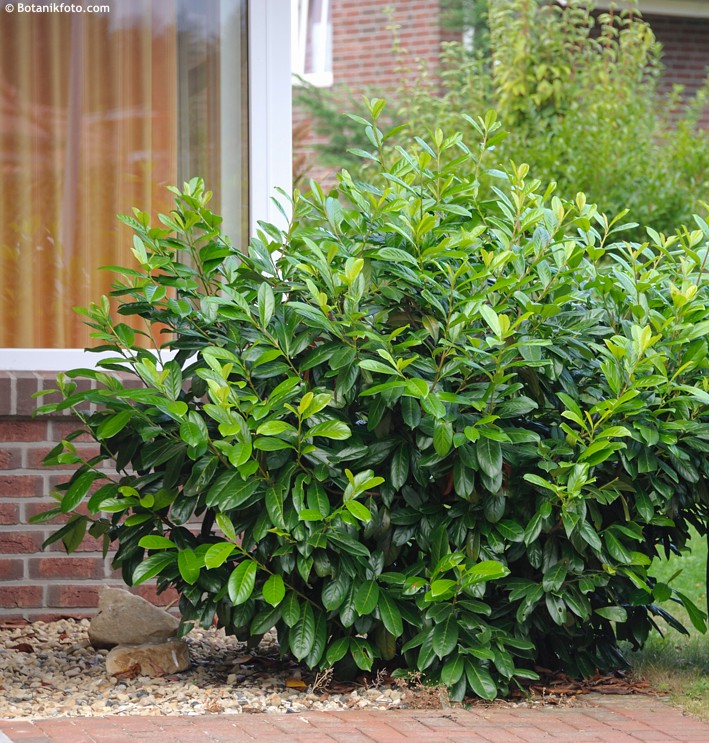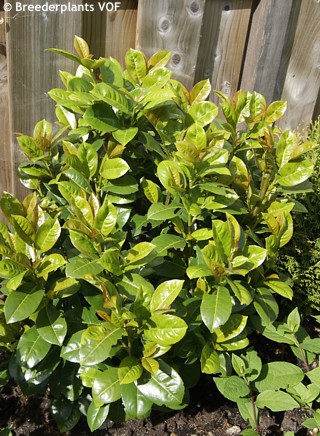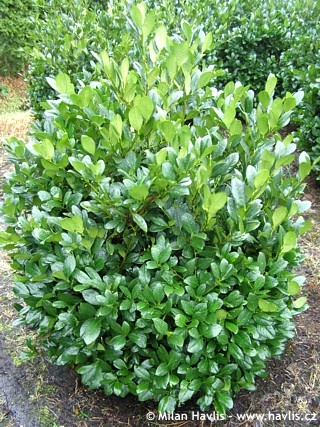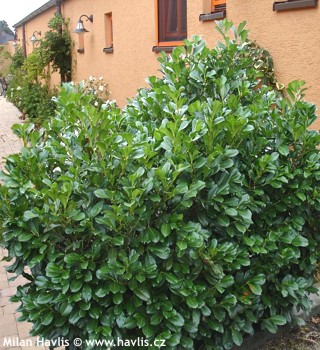Prunus laurocerasus 'DIANA' Cherry laurel, common laurel, English laurel
size/type
medium-sized shrub,medium-sized shrub
usual height
2-2,5m
usual width
2-2,5m
leaves
evergreen broadleaf
colour of leaves
flowers
less showy but noticeable
colour of flowers
blooming time
April-May
location
full sun to shade
soil type
acidic (peaty) to neutral
soil moisture requirements
evenly moist (dislikes drought)
USDA zone (lowest)
5b (down to -27°C)
winter protection
for zone 5+6

for zone 7

categorized
Prunus
We are specialists in evergreen plants and we offer the widest possible range of quality plants. English (cherry) laurel is probably the most common and reliable species.Description of the plant:
Diana cherry laurel is a compact variety producing dense, almost congested shrubs ideal for hedging. Its evergreen leaves are leathery, deeply veined, highly glossy, emerge with orange hues and mature to deep green. The plant grows 25-30 cm per year into an upright shrub when you, forming an almost rounded shape of even width and height 2-2.5m in maturity. Cherry laurels have compound inflorescence made out of small, white, fragrant flowers that appear in April and May. They are followed by very ornamental fruits which, as recent studies confirmed, are not poisonous. Only seeds from unripe fruit if properly chewed may cause discomfort as they contain the same toxin like bitter almonds (source: Plants For A Future - www.pfaf.org). If you want to prune it, do so in mid spring before new leaves emerge or in mid summer.
Laurels need slightly deep and fertile, acidic, moist soil, and extra watering in frost-free periods in winter to prevent from drying out before the ground gets frozen. It will thrive in full sun or part shade, and will also tolerate being grown in full shade. It seldom suffers from chlorosis (leaves turning yellow owing to lack of iron in the soil) but when it does use a special liquid soil pH balancer to keep it acidic which will help the plant absorb iron. The breeder claims extreme hardiness to -30°C (USDA zone 5) without any injury.
Last update 15-05-2019
QUICK PRICE OVERVIEW
CURRENTLY SOLD OUT
WANT TO TRY A SIMILAR PLANT?

















